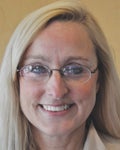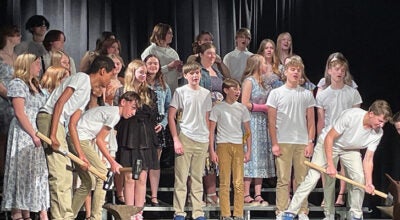School Board Q&A: Mother McAlister would look to cut responsibly
Published 5:49 am Monday, August 13, 2012
School Board Q&A: Carol McAlister, running for Austin Public Schools Board
Q: Why are you best qualified to represent Austin on the School Board?
A: I am a graduate of Austin High School. My husband and I have lived in Austin for more than 40 years. As the mother of five children, who have all been enrolled in Austin Public Schools, I have a vested interest in our district’s continued success. Our three older sons, Eric, Ryan, and Aron — all have graduated. Emily will be a senior and Evan will be in eighth grade. I also have one granddaughter, Josey, who attends preschool at the Wee Learning Center.
I have many experiences that would help me fulfill the duties of this office. I served on the Wee Learning Center Board of Directors (Preschool Education) for 12 years and have volunteered in numerous capacities in Austin schools. I have worked in research at Mayo Clinic for 23 years, so I am accustomed to analyzing data and strategically looking “outside of the box” for solutions.
I have a bachelor’s degree in communications & management and a master’s degree in administration & telecommunications. As Business Manager/Financial Analyst, my professional responsibilities include: developing and managing a 12 million dollar budget; identifying cost savings, efficiencies, and reductions; researching proposals and funding opportunities; grant writing; keeping abreast of federal and state regulations; working well on a team and supporting group decisions; and completing multiple projects on time and within budget.
Q: Board members may be asked over the next few years to make budget cuts. What initiatives or programs would you cut? What do you consider too important to cut?
A: I propose that we ask the same basic question in good financial times and in bad: Are we spending all our money wisely? My goal is to research, identify, and advocate for opportunities to better target our spending, in ways that will get us more education for less money or for places to responsibly cut spending, without hurting the quality of education. Before considering cuts to any program or initiative, I recommend that the district first look for efficiencies or creative solutions that could be implemented to reduce costs so cuts or reductions in programs would be minimized. I believe that it is important to adopt a collaborative decision-making approach with all of the stakeholders in the school [including principals, teacher representatives from each grade level, and parents] when recommending cuts. I also am in favor of holding public forums throughout the process to keep community members informed on which cuts to programs or initiatives are being considered and why. I believe math and sciences, the humanities, social sciences, fine arts, music, industrial arts, and sports are essential to having a productive and vibrant society. With childhood obesity at a crisis point in America, physical education is also essential and too important to cut.
Q: What technological advancements do Austin Public Schools need to make?
A: Technology is important for the development of the 21st century skills that students will need for future jobs. There is approximately $500,000 built into the referendum to upgrade all school buildings with a wireless infrastructure. Once wireless capability is available in all schools, I would like to see a pilot project started to test the use of iPads in the classroom. As new technology is implemented, the district will also need to provide adequate teacher training; create a vision for potential uses of the technology; give teachers time to experiment and plan ways to use technology effectively; supply adequate technical support and equipment repair; and keep technologies up to date. Teachers may struggle to effectively use technology-based instruction in their classroom without these support mechanisms in place. Some simpler ideas of technology use in the classrooms include: Mega websites, software, and various devices such as phones, digital cameras, GPS, or Flip Video.
Q: Sumner Elementary School is in the second year of its year-round, 45/15 schedule. If Sumner students show gains in state comprehensive testing scores, should 45/15 be adopted district-wide?
A: Year-round education affects every aspect of a school and community. There are countless things that the district would need to consider before the 45/15 schedule is universally adopted and the plan is made mandatory rather than voluntary. The district will need to consider a range of implementation issues including state requirements, teacher contracts, curriculum revision, facilities and operations, economic efficiency, transportation, co-curricular activities, and the impact on students, administrators, families, businesses, and community organizations. A decision would also need to be made on whether the district would adopt a single-track or multi-track education program — the advantages and disadvantages of each type of scheduling would need to be studied before a district-wide model could be developed.
Q: What programs, initiatives or class would you like to see added to the district?
A: Mental, emotional, and chemical problems such as depression, mood disorders, self-injury, suicide, and substance abuse have reached epidemic proportions among today’s youth — and our district is not immune to these concerns. Suicide is the third leading cause of death in the United States for young people between the ages of 10 and 19. I would like to see the district establish a school-based suicide prevention program, implement a suicide prevention gatekeeping program, create a comprehensive school crisis preparation and response plan, and offer school-based mental health and counseling services.






